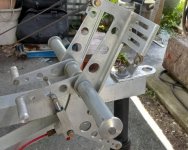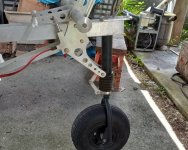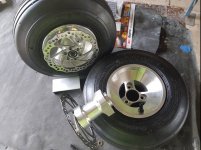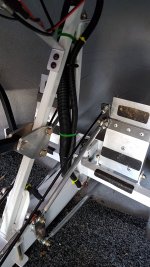Brian Jackson
Platinum Member
- Joined
- Jul 17, 2004
- Messages
- 3,527
- Location
- Hamburg, New Jersey USA
- Aircraft
- GyroBee Variant - Under Construction
Greetings folks.
It's odd that in the years I've spent here I know nothing about differential braking other than in concept. For example, are there generally 2 separate hand levers or are they usually engaged with a secondary pair of pedals? I'm sure there are considerations in landing gear triangulation to prevent twisting and over-stressing the structure, much like how you don't want a super hard grip on a rotor brake twisting the mast.
I'm curious about your set-ups, how you achieved differential braking, and when & when not to use them. Not seen a lot of discussion on this topic and Search is of little use on the Forum. Thank you in advance.
It's odd that in the years I've spent here I know nothing about differential braking other than in concept. For example, are there generally 2 separate hand levers or are they usually engaged with a secondary pair of pedals? I'm sure there are considerations in landing gear triangulation to prevent twisting and over-stressing the structure, much like how you don't want a super hard grip on a rotor brake twisting the mast.
I'm curious about your set-ups, how you achieved differential braking, and when & when not to use them. Not seen a lot of discussion on this topic and Search is of little use on the Forum. Thank you in advance.








